Genre: Sports Developer: Codemasters Publisher: Codemasters Players: 1-4 Released: 1995
The phrase “PAL-exclusive sports game” probably doesn’t pique the interest of your average Sega fan. However, if you’re a tennis buff like me and enjoy playing through the world of 16-bit racket sports, it might intrigue you to learn that Pete Sampras Tennis — a flawed but reasonably well-regarded offering from Codemasters — had a sequel that never made it to the Western Hemisphere.
Like its predecessor, Sampras Tennis ’96 (which calls itself Pete Sampras Tennis ’96 on the title screen, but uses the shorter name on the box and cartridge) is a J-Cart with built-in controller ports that allow for four-player gaming without a multi-tap. Despite being a European exclusive, it runs perfectly on NTSC systems. The blurb on the back of the box boasts of new animations, a greater variety of shots, and an upgraded World Tour mode with a new Pro difficulty. All that sounded promising to me, so in hopes that Sampras Tennis ’96 would turn out to be the kind of first-rate tennis game I’d long wanted to see on the Genesis, I ordered my copy from England at a modest price and sat down with it earlier this year.
However, things don’t get off to a good start as, for whatever reason, Sampras Tennis ’96 offers fewer playable characters than the first game. Seven fictional players are available, including four women and three men, plus Sampras (who can’t be selected in World Tour mode). These fall into typical archetypes, like the fast but weak Minori Kurosawa, the slow and powerful Sam Nimitz, or the all-rounder Wanda Tucker. A few have a whiff of national stereotyping, e.g. the Spanish and Italian players described in the manual as “bad-tempered” and “prone to argue.” Hey, at least they didn’t call them “hot-blooded.” For my money, the best choice is probably Marie Guyennot, a fleet-footed Frenchwoman with a solid serve and strong groundstrokes.
(There’s also a secret character — a female robot! — who can be unlocked with a password, though it’s not clear how the player is supposed to find that out. She’s basically a super-fast version of the Wanda Tucker character, and if you play against her, the match is held in space with a robotic referee and green-skinned ball boys.)
As in the first game, you can play exhibition matches (called “challenge” mode) with up to four simultaneous players, set up a short multi-round tournament, or take on the game’s World Tour mode, culminating in a match against Pistol Pete himself. The World Tour can be played as a two-player doubles mode as well as singles, which is a rare option and a nice touch. As you fight your way through a total of seven matches (five in doubles mode), you can save your progress after each win with a short password. Matches on normal mode are one set long, but on Pro difficulty you have to win two out of three sets.
Sampras Tennis ’96 looks a bit better than its ancestor, and is mostly free of the choppiness and framerate issues that plagued the first game. The box brags about the new “parallax scrolling 3D court” and “varying camera angles,” but if anything the moving camera is a bit distracting. The sound and music are serviceable, but offer no significant upgrade. Still, it’s the gameplay that counts, right?
Well, the best word to describe Sampras Tennis ’96 is dinky. This tendency was already apparent in the first Sampras game, but here it’s carried to an extreme. Practically every ball that comes off the CPU’s racket is some kind of dink, drop shot, junkball, shank, moonball, or whatever word you prefer for a floaty ball with no pace. Even the biggest serves get dinked back as perfect drop shots, forcing you to constantly sprint forward to retrieve a ball that’s two feet from the net. And just like the first game, it’s remarkably easy to shank the ball, sending it floating in a random direction, usually to land on your side of the net, or to even overrun the ball completely and end up with it bouncing off your torso.
Now I’m all for nuanced, tactical tennis, and I love seeing a tricky junkballer take down a hard-hitting opponent, so the idea of a junkballing tennis game on the Genesis is kind of cool, but Sampras Tennis ’96 takes it too far. The ball feels strangely dead and lifeless, and it’s hard to take much pleasure in pure ballstriking. You can either dink or clobber the ball, with not much in between, and wailing on it will just lead to a quick “out” call unless your court placement and timing are exactly right. Shots that should be easy putaways are either underhit or overhit, and finishing a point at the net is seldom viable. Only service returns offer a consistent opportunity to unload, and it’s satisfying to smoke a return winner crosscourt off a slice serve out wide, which is an effective tactic even against Sampras.
As in Pete Sampras Tennis, the control scheme is essentially a two-button proposition, with A for lobs and B for normal hits, while C is used for diving for the ball. This never really made sense to me, since most tennis games just have the player dive automatically if you try to hit a ball you can’t quite reach, but it’s tolerable once you get used to it. The game loves to turn desperate lunges into highlight-reel shots, which might be nice as an occasional treat but gets irritating when the CPU routinely comes up with amazing, diving saves over and over again. If you doubt me, watch the attract mode. The doubles demo matches look like footage of baby gazelles gamboling and tumbling in the savanna. Making matters worse, the CPU’s dive usually makes the game’s camera jerk abruptly to one side, causing the framerate to stutter and making it very hard to gauge the ball.
The biggest novelty in Sampras Tennis ’96 is the addition of spin. Using a combination of buttons, you can add topspin, backspin, or sidespin to your shots. Sidespin, for instance, can make a ball unexpectedly kick away from your opponent when it lands. On Pro difficulty, the CPU can do it as well, adding to the challenge.
This may sound like a nifty enhancement but, in reality, multiple game-breaking flaws make it a liability. First and foremost, either the manual’s instructions are nonsense, or it’s borderline-impossible to properly execute the awkward button combinations used to generate spin. Despite many attempts, I was never really able to pull it off. Even if I had, it might be effective against a human opponent, but it’s hard to imagine a computer opponent getting fazed by an unexpected funky bounce.
Playing on Pro level, you’ll experience the CPU’s use of spin firsthand, and it quickly becomes clear what a misguided idea the whole thing is. In real tennis, you get all kinds of cues when your opponent hits a wonky or mishit ball: you can see the racket motion, hear the sound of the ball coming off the racket, and even watch the insignia on the ball itself as it rotates. In a 16-bit video game you don’t get any of these cues, so there’s no way to anticipate which way the ball will bounce. And the spin effect is by no means subtle: these balls can jump away like a frightened rabbit, mysteriously die in place, or unexpectedly leap forward and bop you in the chest. It’s wildly excessive and totally unpredictable, like constantly getting bad bounces on a beaten-up grass court.
Adding insult to injury, since the CPU is constantly drop-shotting you, it’s frequently hard to even see the ball at the crucial moment. If you’re in the far court it’s partially hidden by the net, and in the near court your player sprite often hides it. The end result is that you’ll end countless points by walking into the ball, thrashing at empty air, or mistiming your swing and shanking the ball.
And while I’m at it, why the heck do I ever have to play from the far court in single-player mode, anyway? Shouldn’t the gameplay always be shown from my point of view? Bizarrely, the game lets you swap the viewing angle in Challenge mode, but not in World Tour mode. I have no idea why the designers felt they needed to remove that option, but their decision makes no sense at all, since playing from the far court is a huge handicap for a human player: it’s significantly harder to time your shots or read the ball, because the sprite resolution simply isn’t fine-grained enough to show the full level of detail.
If all this doesn’t sound like much fun, well, it isn’t. I can cut Sampras Tennis ’96 a little slack for its four-player support, for its streamlined and user-friendly menu system, and for the small graphical improvements and added challenge over the first game. Still, for all its weird bugs and framerate flaws, the original Pete Sampras Tennis was amusing and occasionally satisfying. The sequel, though, is too frustrating and finicky for its own good, and while I was able to beat it I didn’t much enjoy the process. The doubles mode in World Tour offers a rare opportunity to join forces with a friend to beat the game, and that’s probably the biggest selling point of Sampras Tennis ’96. Otherwise, look elsewhere for your 16-bit tennis needs.
SCORE: 4 out of 10

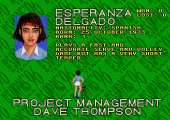
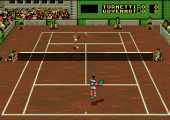
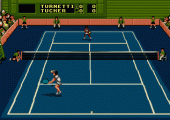
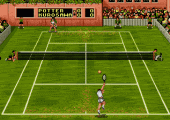
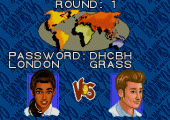
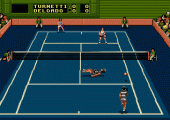
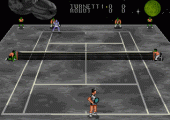
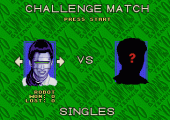

Recent Comments